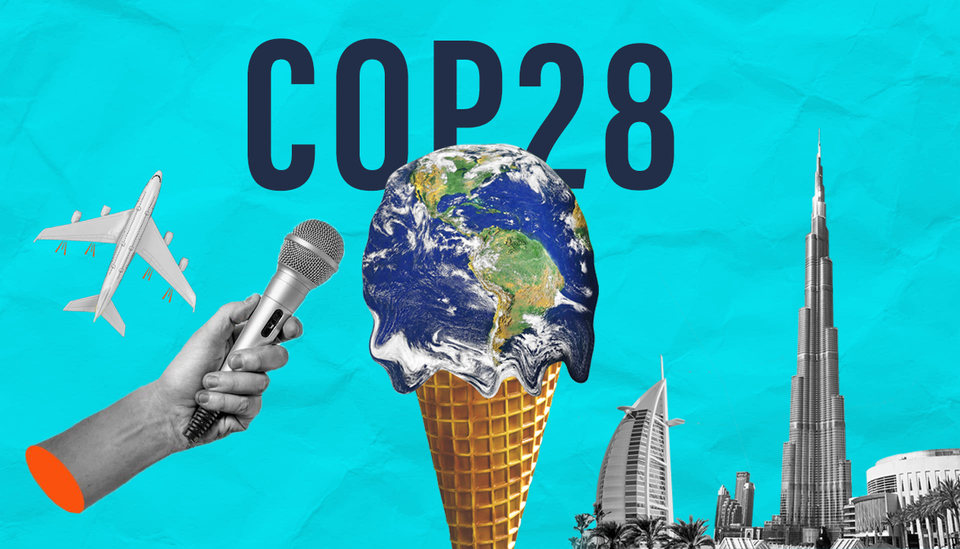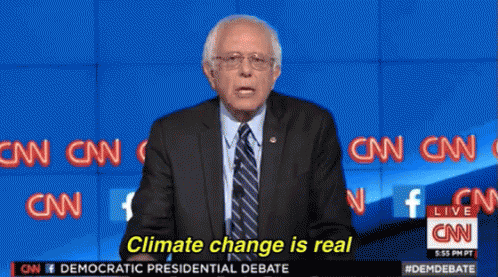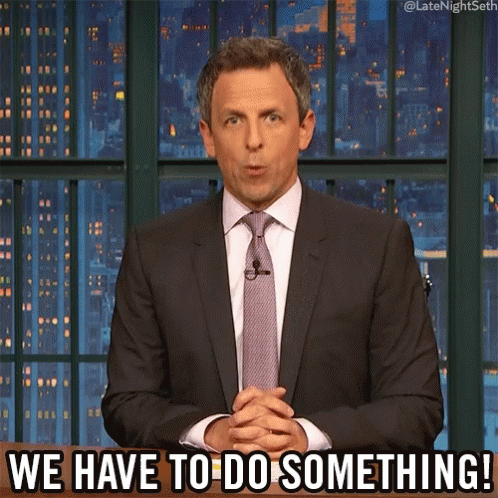COP28 Unwrapped: From Ambition to Action

- Farewell to Fossil Fuels: Beginning of the end of fossil fuels through scaled-up finance in sustainable and renewable energy.
- The Global Stocktake: A vital tool to turbocharge climate action, providing a panoramic view of progress while pinpointing critical gaps on the journey to fulfill the ambitious goals of the Paris Agreement.
- Nationally Determined Contributions (NDCs): Deadline 2025. Nations urged to bolster their commitments, amplifying ambition towards renewable energy and bidding adieu to fossil fuels.
- New Loss and Damage Funding: A shift towards climate justice by offering crucial support to nations on the frontline of the climate crisis.
- Climate Finance: Fueling the green and clean energy transition by facilitating the implementation of national climate plans and bolstering adaptation efforts. Yet, the need for trillions annually remains a pressing reality.
- Ecosystem Protection: Greater focus on safeguarding terrestrial and marine ecosystems, combating biodiversity loss, and launching decisive actions to tackle deforestation, all underpinned by a commitment to harness nature-based solutions for a sustainable future.
Summer, with its promise of fun trips to the countryside, warm nights, and picturesque sunsets, is a season often eagerly anticipated. However, the reality is shifting. With 2023 marked as the hottest year in history (Chow, 2024), the Earth bears witness to unprecedented heat and record-breaking temperatures year-round. As we brace for the changing face of summer, it’s crucial to recognize that the impacts of climate change extend far beyond the confines of a single season. Climate change is leaving a permanent mark on ecosystems and societies worldwide, with suffocating heat waves igniting wildfires, intense cyclones destroying civilizations, and freezing dzuds gripping vulnerable regions. These extreme events underscore the urgent need for collective action to mitigate the ravages of climate change. These natural disasters, or as I like to say human-caused effects, should serve as a wake-up call, urging humanity to confront the realities of their actions before irreversible damage is done.

The Conference of the Parties (COP) UN Climate Change Conference stands as the ultimate global assembly of nation-states and a diverse range of interest groups, convening to forge unified solutions to tackle climate change. The most recent COP, the 28th in its series, assembled with expectations for significant advancements, yet once again revealed a major gap between rhetoric and promises, and the grim reality of outcomes. Indeed, it is disappointing that pledges made at COPs over the years have often amounted to little more than broken promises (2023). Therefore, it’s imperative to scrutinize the history of notable COPs to gauge any discernible progress. Have there been advancements, and if so, have they proven adequate in addressing such a pervasive global phenomenon?
First COP in Berlin, 1995
- Called for legally binding emissions targets
COP3 in Kyoto, 1997
- Emissions cuts for developed countries, with different limits assigned to different countries
COP15 in Copenhagen, 2009
- Ultimately failed to produce a legally binding agreement and failed to agree on limiting GHGs with the sole excuse of economic growth
COP16 in Cancun, 2010
- Established a Green Climate Fund to help developing countries cut emissions and adapt to the conditions of a warmer world
- Set a goal of limiting global warming to 2°C above the pre-industrial average
COP21 in Paris, 2015
- The Paris Agreement, the first global pact to call for increasingly ambitious emissions pledges - called "Nationally Determined Contributions, or NDCs - from both developed and developing countries
- Delegates pledged to try to keep warming to within 1.5°C

COP25 in Madrid, 2019
- Lack of significant progress on key issues, including carbon markets and increasing ambition in emissions reductions
COP26 in Glasgow, 2021
- Significant attention to the goal of using less coal, increasing climate finance, and trading carbon credits to offset emissions
COP27 in Sharm el-Sheikh, 2022
- Agreed to provide a Loss and Damage Fund for costly climate disasters, but failed to hold its promises on green finance targets
COP28 in Dubai, 2023
- First global stocktake
- New funding for loss and damage
- Beginning of the end of the fossil fuel era
The verdict is that there have been successful and unproductive conferences alike. However, recent assessments of the most recent COP reveal a consensus of insufficiency and lack of ambition. Critics argue that it failed to enact the necessary adjustments to eliminate fossil fuels, a critical step in addressing climate change (Abdelraouf, 2023). While there were some notable achievements, such as the reinstatement of a Loss and Damage Fund which amassed over $792 million in contributions, the reality remains stark: this amount represents less than 1% of the funding required to assist those most severely impacted by climate-related disasters. As highlighted during COP27, the world requires an annual investment of approximately $4 trillion in renewable energy until 2030 to achieve net-zero emissions (UNEP, 2022). Moreover, critical questions linger regarding the financing of adaptation efforts and addressing inevitable climate impacts. Agreements reached thus far lack clear, specific goals on adaptation finance, leaving uncertainty regarding who will shoulder the burden of the hundreds of billions of dollars needed for adaptation initiatives (Chevallier, 2023).

On a more optimistic note, a significant outcome of COP28 is the incorporation of the four cross-cutting themes of technology and innovation, inclusion, frontline communities, and finance through the introduction of the first global stocktake. The Global Stocktake is a comprehensive assessment of the world's progress on climate action, encompassing every element negotiated during the conference. Its primary function is to ascertain whether states are effectively fulfilling their commitments and advancing the transition from fossil fuels to renewable energy. However, progress in key areas such as GHG reduction, resilience-building, and financial and technological support has been sluggish, highlighting the urgent need for accelerated climate action. Simon Stiell, the UN Climate Change Executive Secretary, has urged member states to translate their pledges into tangible outcomes within the economy. This entails making more aggressive national commitments (NDCs), particularly before the decade’s end. Such decisive action is crucial to propel the transition towards a sustainable, low-carbon future.
Nationally Determined Contributions, or NDCs, represent each nation's efforts to cut down emissions and to adapt to the effects of climate change. Mandated by the UNFCCC, every participating party is tasked with formulating, disclosing, and adhering to their respective nationally determined contributions. Additionally, nations are required to periodically review and publicize their NDCs every five years, thereby signaling their progress and level of ambition in combating climate change (UNFCCC). Crucially, NDCs should encompass both mitigation and adaptation plans, incorporating time-bound quantitative adaptation targets, contributing towards SDGs, and advocating energy efficiency to reach their maximum potential for net emission reduction.
Since the updated NDCs are due by early 2025, countries have taken significant steps to increase their mitigation and resilience ambitions. The EU, for instance, has raised its emissions reduction targets to at least 55% below 1990 levels, demonstrating a substantial increase in climate ambition through initiatives like the European Green Deal and a commitment to achieve carbon neutrality by 2050 (UNFCCC, 2023). Similarly, populous nations like China and India have outlined targets to peak their emissions, like increasing the share of non-fossil fuels in their energy consumption and aiming for 40% cumulative electric power installed capacity from non-fossil fuel-based energy resources by 2030 (Jiang et al., 2022). Regarding the US, they have had commitment issues (haven’t we all) to international climate cooperation, but rejoining the Paris Agreement in 2021 brought ambitious targets to the table. This included a pledge to reduce greenhouse gas emissions by 50-52% below 2005 levels by 2030, marking a notable increase in ambition compared to previous commitments (UNFCCC, 2021). However, various implementation challenges persist for other nations, driven by factors such as technological constraints, institutional capacity gaps, competing policy priorities, and limited financial resources.
Despite the acknowledged significance of climate finance in accelerating decarbonization efforts, the principle of “polluter pays” gains increasing prominence. This principle entails levying a carbon tax, wherein higher emitters incur greater financial obligations, thus incentivizing a shift towards low-carbon investments and consumption patterns. Revenues generated from such taxes can be directed towards compensating the most vulnerable regions (Georgieva, 2023). However, at COP28, delegates failed to find agreement on operationalizing Article 6 of the Paris Climate Agreement. This article, if activated, could have encouraged voluntary cooperation through mechanisms such as voluntary carbon markets (VCM), thereby fostering international cooperation to meet climate targets and mobilizing financial support for developing nations (UNFCCC).
In conclusion, COP28 stands as another pivotal moment in the global fight against climate change. As the world grapples with the escalating impacts of climate change, this conference serves as a poignant reminder of the urgent need for resolute and decisive action. It is imperative that the international community transcends political divisions and prioritizes collective interests to safeguard the planet for future generations. As the fate of our planet hangs in the balance, let’s transform our ambition into action.


Comments ()